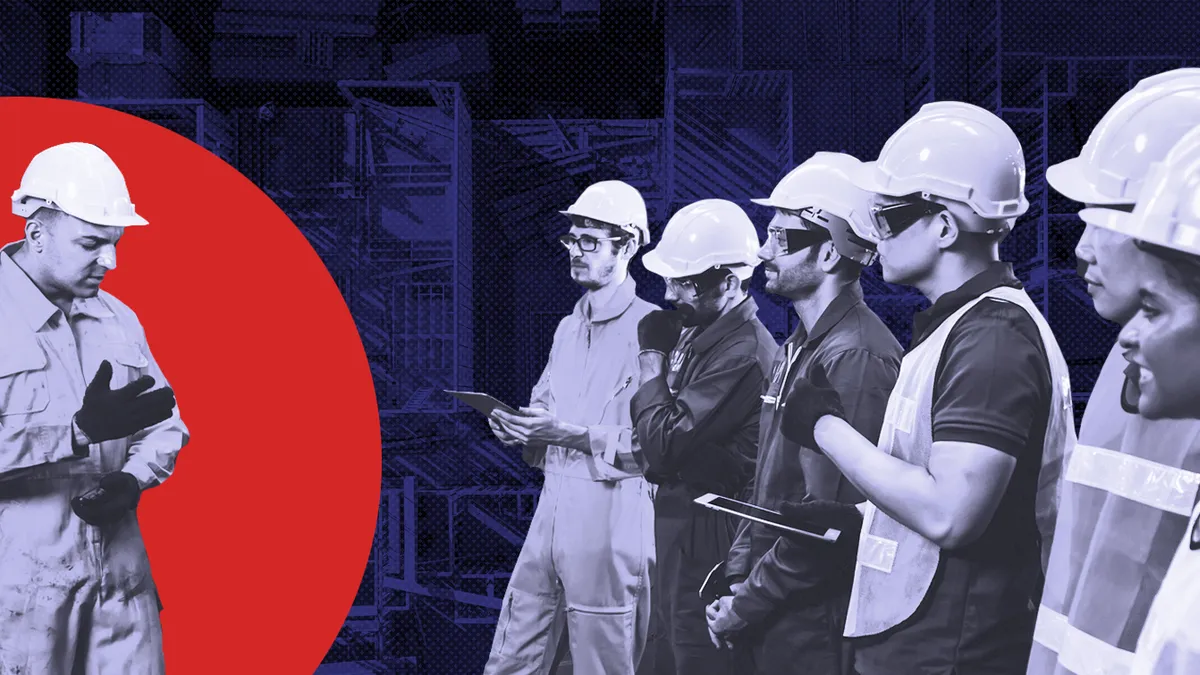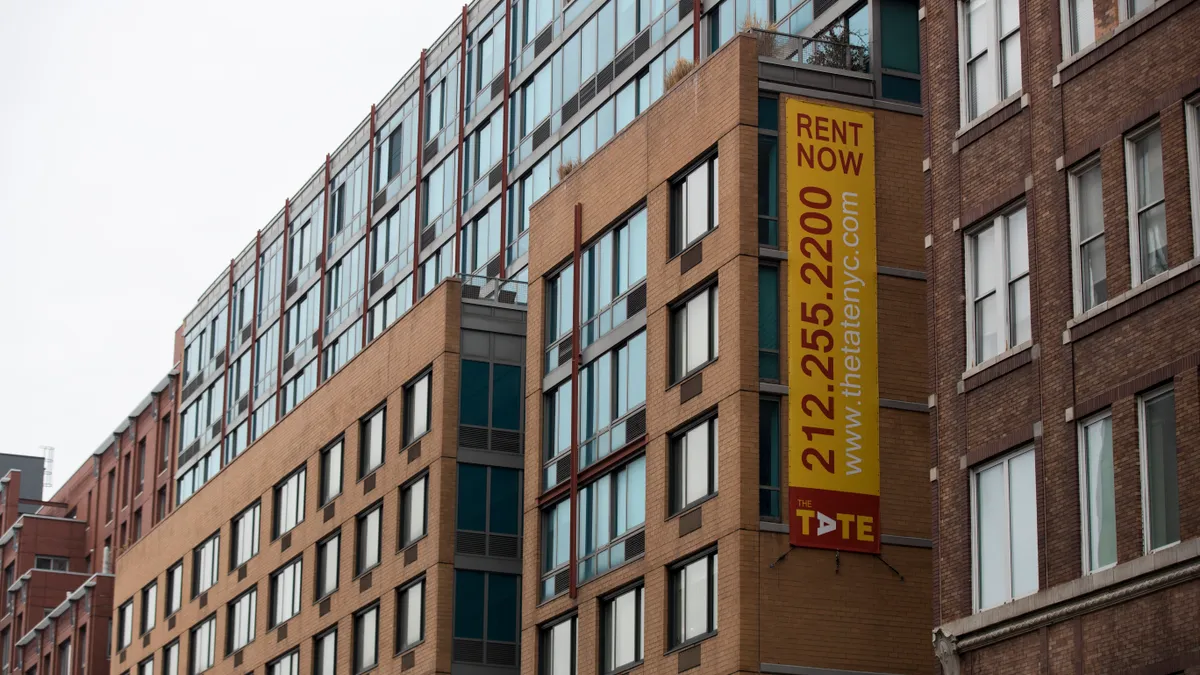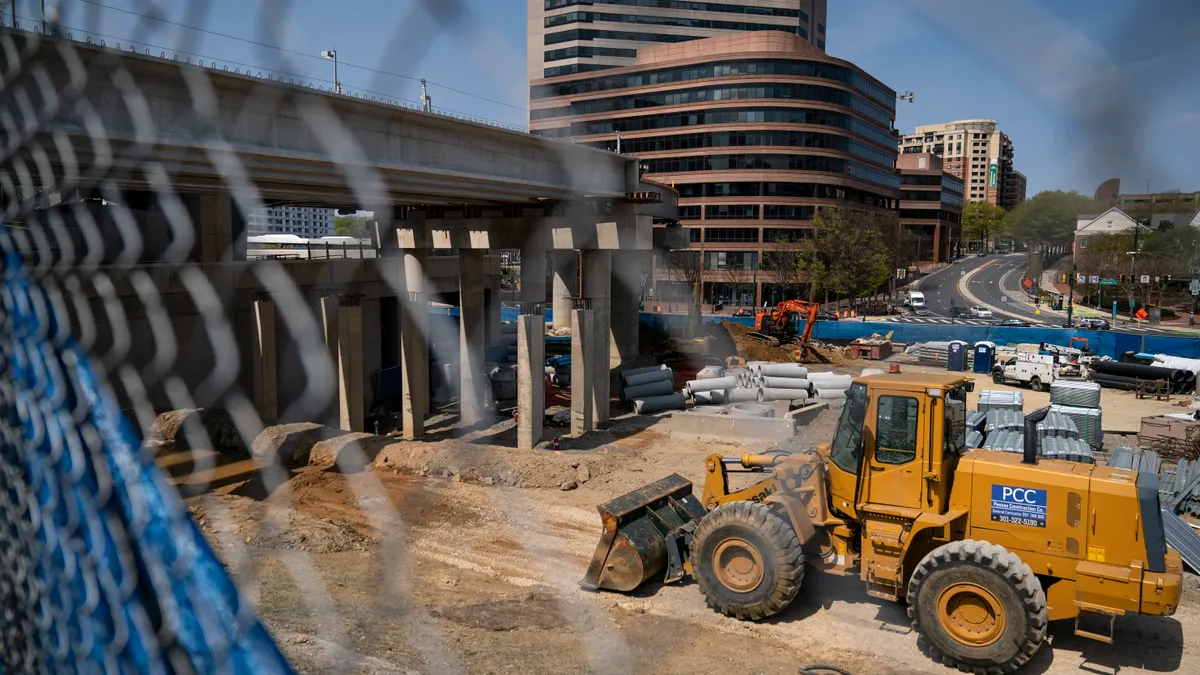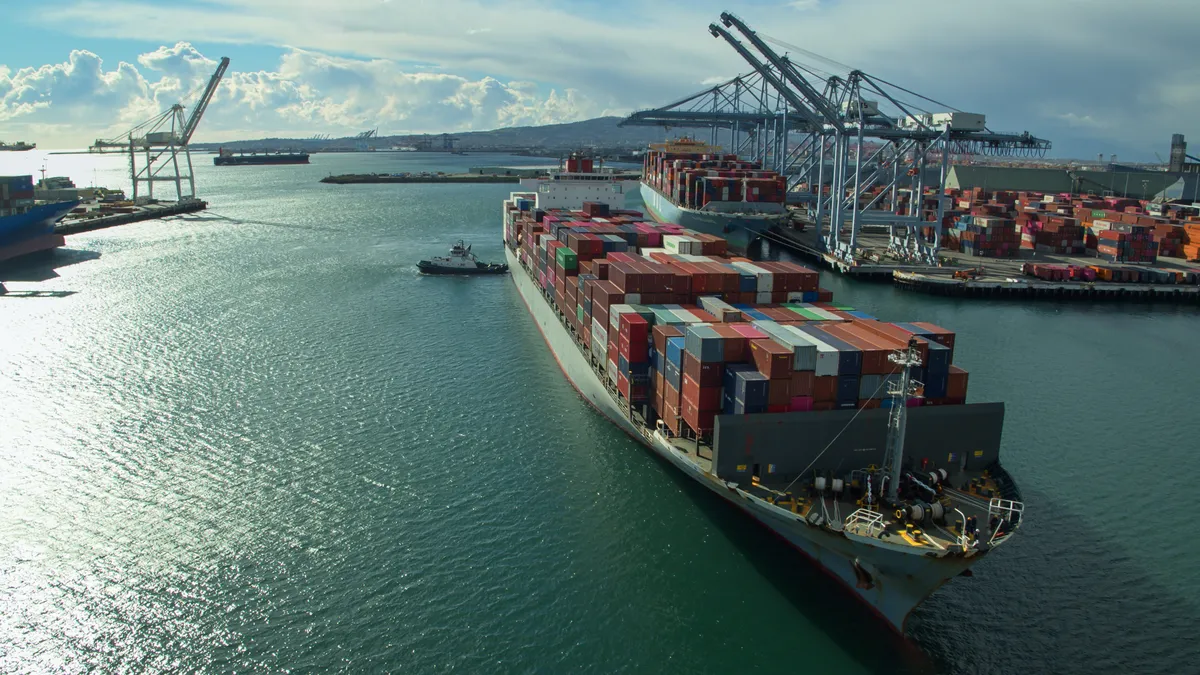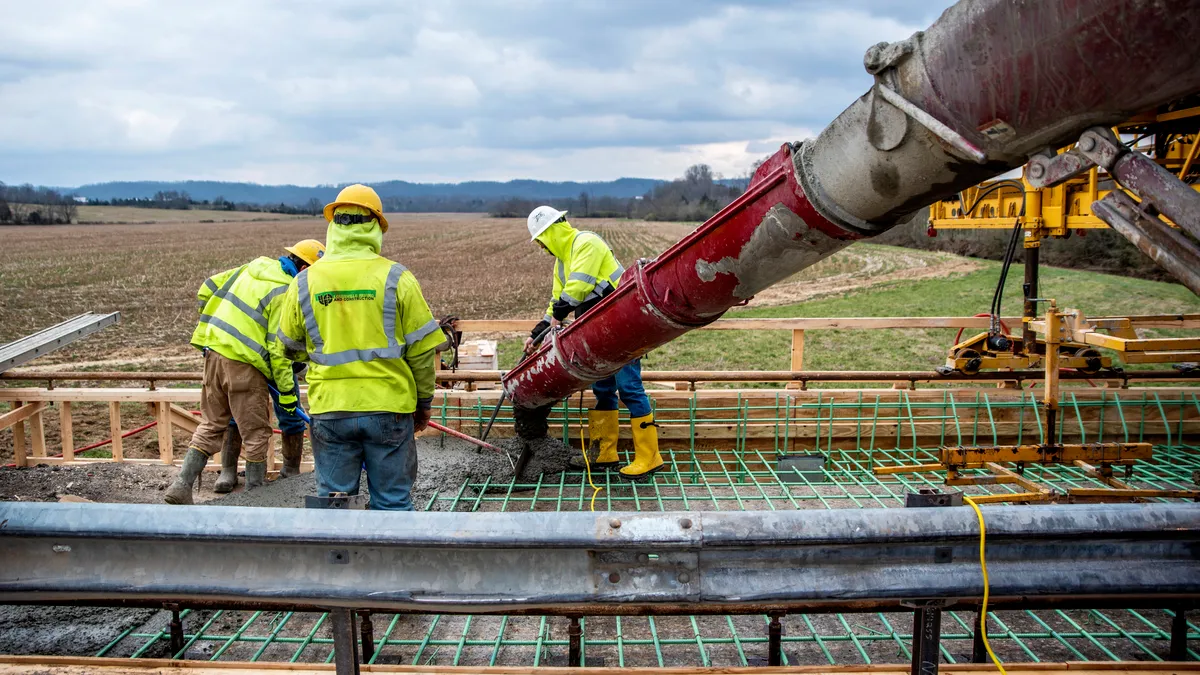For construction, a "Help Wanted" sign is familiar, as the demand for new workers has continued to outpace the supply.
The industry has faced a compounding labor shortage for decades, and, in 2022, a perfect storm of swirling factors could both aid and exacerbate the issue.
For most of 2021, jobs were stagnant in construction, according to numbers from the Bureau of Labor Statistics. Construction began the year with roughly 7.4 million jobs, seasonally adjusted, and the last report of the year indicated 7.5 million jobs in November. That’s the closest construction's employment numbers have been to prepandemic numbers since March 2020, when the industry employed 7.6 million workers.
From a huge influx in public spending, to debates over vaccines and continued social changes, here are the top trends impacting construction labor in 2022.
Recruitment takes on new importance
In the past few years, companies nationwide have seen rapid cultural changes, with an emphasis on creating opportunities for underrepresented groups, such as women and minorities. Construction has gotten in on that trend, with programs and incentives aimed at attracting new workers to the industry, regardless of their gender or cultural background.
That may not always be the impression those outside the industry see, however.
"The days of the rough and gruff contractor, that ship has sailed," said Tim Keating, president of R.C. Stevens Construction in Winter Garden, Florida. "I'm an old guy. But I changed my way, and I'm the head cheerleader."
Keating said he has tried to make cultural shifts within his company, emphasizing that in order to make workers feel welcome and valued — which is key to retaining them — employers must "walk the talk," meaning engaging with workers and generating a welcoming culture at the jobsite.
For Stephanie Schmidt, president of Poole Anderson Construction in State College, Pennsylvania, retaining the workers she has is her biggest goal for 2022. She has already raised pay rates and looked into new benefit packages and paid time off. But, at the end of the day, it's always about attitude and culture.
"Somebody will always pay a buck more to get somebody," Schmidt said, "but we really need to get them ingrained in our culture by providing them with good work, steady work and knowing that they have a future."
Developing a career development plan for every worker they take on has allowed Poole Anderson to provide them with a clear career path for the future, while focusing on attitude and ability.
Keating said it is always about attitude, as it's possible to teach anyone you can recruit how to build. The real value comes from the soft skills — which 92% of talent experts say is vital to retention.
Even still, more will need to be done to attract women and minorities, Ken Simonson, chief economist for Associated General Contractors told Construction Dive.
"I think it's going to be essential for construction firms to continue to broaden those [cultural recruitment] efforts," he said.
With slow population growth, the industry won't be able to count on the same pool of workers, Simonson said, which means firms will need to reach out to even more women and minorities.
Construction also faces an uphill battle with location, as often the jobsite may be far from home. Distance may cause workers to sit on the sideline, or find more stable work — even if it pays less — closer to home.
Carla Kugler, president and CEO of ABC New Mexico, says their members are doing more to support workers' families, especially for those with jobsites that keep them away for extended periods of time. From ensuring workers can return home, providing child care and creating family day — where relatives of workers can visit — on jobsites, Kugler said, the industry recognizes the daily sacrifice workers make.
Infrastructure work will impact private jobs
President Joe Biden signed the Infrastructure Investment and Jobs Act into law in November, spurring a once-in-a-generation influx of $1.2 trillion in new spending — $550 billion of which was earmarked for infrastructure itself.
The funds mean more work for civil contractors, which builders and groups have pushed for for years. But the new work will not come without its challenges.
The industry, which was already in dire need of workers, will now see an increase in demand for jobs across more work sites. As a result, wages are likely to increase for skilled workers who will have more options, and the demand-supply ratio could worsen.
The issue will not just make things harder for civil builders, however. As some workers move to where the money is, private contractors may see more challenges in staffing jobsites. Those challenges could lead to entire projects being put on hold, or even not taking off.
"I'm concerned that the private developer or the private person that wants something built will say, 'I can't get people, there's no reason for me to build it now,' and that's going to kind of put a stranglehold on that faucet," Keating said.
As long as public projects are taking off, private projects will take a backseat, Keating said. The wages will simply be higher for those public projects, and therefore private work will be "squeezed."
Despite new challenges the IIJA will no doubt impose, Simonson said the influx of work will certainly be a net positive, and improve the quality of life in the U.S.
"It's a huge positive for construction both in a steady extreme of projects and signaling to those people that this is a field that we see a lot of money coming for a long time," Simonson said.
The increase in public work could also help the industry continue to improve employment practices. By having a light pipeline of workers entering the workforce now, contractors face a challenge, but one that will present them with the opportunity to identify what employees want, Todd Lofgren, executive vice president and general manager for Skanska USA said in an email to Construction Dive.
The demand for workers could help with the social push to improve those conditions for workers.
With more public work, however, the industry may continue to see a duel over COVID-19 vaccinations.
Vaccine mandates will continue to cause confusion, conflict
"It has become almost impossible for contractors to navigate the quagmire of regulations governing COVID-19 and vaccines," Trent Cotney, CEO of Cotney Attorneys and Consultants, told Construction Dive in early December. "The uncertainty has left many contractors to do little or nothing in the form of preparation because it is unclear what current regulations will remain after judicial scrutiny."
Between the time of Cotney's statement and the time of publication, uncertainty has continued around mandates. The most recent change came on Dec. 22 when the Supreme Court said it would hear arguments on the two mandate measures; a vaccine-or-testing mandate for employers with more than 100 workers and a vaccination requirement for certain health care workers. Cases will be presented to the Court on Jan. 7.
Kugler said her members were "freaking out" over the mandates, finding the guidance unclear, and the responsibility a daunting undertaking to document 100% of workers vaccination status. As the responsible contractor on a public project, many GCs would also need to ensure the vaccination status of all the subcontractors on a jobsite, which could lead to a possible default.
Defaulting, Kugler said, severely limits a contractor's chances of ever winning a public work contract again.
In addition, construction managers find themself between a rock and a hard place as they try to facilitate the discussion between their workers who want an inoculated workforce and those opposed to vaccines. Construction's vaccine rate is low, as less than 60% of workers are vaccinated, compared to more than 80% across other publications, according to Silver Spring, Maryland-based CPWR, the Center for Construction Research and Training, a construction safety research group.
Simonson said he is hopeful that more workers would realize it is within their own self-interest to get vaccinated, for protecting themselves and their fellow workers.
Mandates or no, contractors and groups are trying to encourage workers to take the vaccines. Jay Reed, president of ABC Alabama, told Construction Dive he's spoken to vaccinated business owners who have encouraged getting the shot, but don'y want it forced on their employees.
Nevertheless, Lofgren said, some workers and employers will have to face the fact that private clients will impose their own restrictions, which could mean less or no work for those that don't get the shots. That's something Skanska USA is already experiencing.
"Based on mandates from clients, contractors can expect to have vaccinated employees," Lofgren said. "We are seeing more private clients enacting vaccination mandates, not only in healthcare and life sciences sectors, but in other markets as well."
Meanwhile, the AGC has appealed to members to get the shots by filming public service announcements featuring workers who've gotten sick and recovered.
At the end of the day, the goal for employers and workers seems to be the same, Reed said: keeping work going.
"The show must go on. Shutting down is not going on," he said



